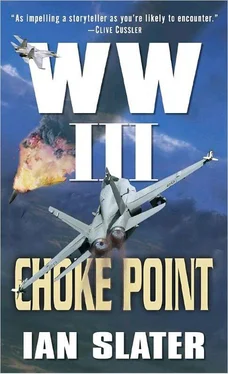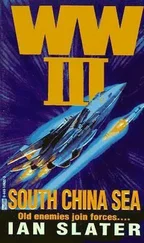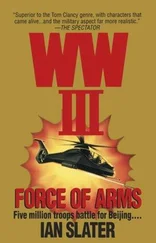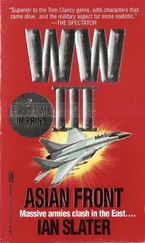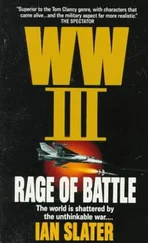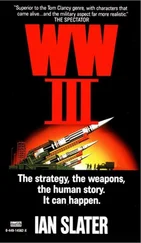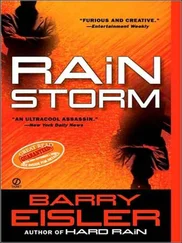“A disaster,” he replied, with the kind of deliberation that had always alarmed her. A “disaster” for Walter in what she called his “worrywart moods” had come to mean anything from the possibility of having to replace the muffler on his beloved Porsche to hearing that one of his Hunter Killers was in deep trouble somewhere in the Pacific.
“You look awful, Walter.”
Wordlessly, he flicked on CNN, and there it was, the lead story. How did those media bastards find out about this stuff so quickly? More than a headline, the news flash was taking over the entire 11:00 P.M. newscast. Not many details, but repetition ad nauseam of a “tremendous explosion” being reported by Seattle’s CNN affiliate; the high-profile anchor, Marte Price, claiming that it was believed to be one of the Navy’s ICBM “boomers”—Trident submarines. Normally, Jensen would have been scornful of the misidentification, quick to point out that it was a “Hunter Killer attack boat, you idiot,” but all he could think of now was to say a silent prayer that Keach was able to have Turner ’s Sea Kings and every other available helicopter in the battle group rescue as many of Utah ’s men as possible, and how he, COMSUBPAC-GRU-9, so recently at large in Seattle’s society circuit as guardian of Juan de Fuca’s and Puget Sound’s pristine environment, would be offered up by the White House as the sacrificial lamb for the catastrophe.
“Kimmel’s reputation was destroyed,” Jensen now told his wife, “when FDR fired him as CINCPAC after the surprise attack on Pearl Harbor. Doug MacArthur had been just as guilty, in fact more culpable of ignoring warnings about an attack on Clark Field in the Philippines — parking all his damned planes in clumps, easier to guard, and easier for the Japs to destroy the next day. But fate was on Doug’s side — FDR didn’t have anyone else available on our east perimeter to take command.” Kimmel, he knew, had died in obscurity, and when MacArthur did get fired by Harry Truman for wanting to cross the Yalu from Korea and bomb China’s staging areas, he came home a hero, got a ticker-tape parade the likes of which New York had never seen. He slumped into his TV chair, saying, “They’ll crucify me, Margaret.”
She went to the kitchen and began making coffee. It would be a long night. Finally, her hand on his shoulder, she asked quietly, “How many men were aboard the Utah ?”
“A hundred and thirty, give or take. A woman aboard too, one of our scientists. Torpedo specialist.”
Margaret bit her lip, thoroughly ashamed of herself. “Torpedo specialist” had made her think of a joke she’d heard among the Navy wives — torpedoes and penises. How could one think of such a vulgar thing at a time like this? Same thing, she remembered, when she was a child. Went to church every Sunday, frightened sometimes by the urge to yell out the foulest things. The more she tried to block it out, the worse it became. Walter said such things to her only when he began kissing her between her—
“Rorke,” said Walter softly. “He’s the skipper.”
Margaret nodded. As the wife of an admiral, she got to know most of the skippers. Like her husband when he was younger, they awed her. The responsibility of young men like John Rorke, who drove the nuclear-powered steam engines that carried the power to destroy worlds, impressed even someone from the rarefied air of Radcliffe College.
“Keach,” Walter said suddenly. “Your old beau. He’s safe on the Turner . The carrier.”
“Oh, yes.”
They were both wrong. Six minutes after the last rescue helicopter had left the Turner ’s darkened flight deck, three warhead mines, their release fuses initiated by the enormous downward push of the Turner ’s 98,000 tons, detonated. The near simultaneous explosion of the mines caused what Alicia Mayne would have called a “geometric” rather than “arithmetic” progression, in that one plus one plus one did not equal three, but much more, the pressure wave so powerful that it lifted the huge warship into the air. It wasn’t by much, indeed it would have been barely perceptible to the naked eye, even in daylight, but it was enough to create a fissure running up from the great ship’s keel, or spinal column, to several decks above, in effect breaking the carrier’s back. Many survivors of the Utah , eight miles to the east, foundering amid the floating debris of the sub, unable to gain a purchase on any floatable wreckage and who had only life vests, were concussed into unconsciousness by the shock waves that sped through the water from the stricken Turner at nearly 3,000 miles an hour.
Below on the carrier’s flight deck, in the cavernous hangar, which, save for the rescue helos, did not yet house its air wing — the latter’s fighters, fighter-bombers, attack and recon aircraft, following standard procedure, having not yet flown to the carrier from Whidbey Island’s naval station — the crew witnessed an astonishing sight, one unique in the annals of naval history. Because their blast door was down, separating their section from the other two hangar zones, what appeared in front of them on the port side was not the huge wall that normally separated their hanger section from the support structures outside, but a jagged, ten-foot-wide gash four stories high, running from below the waterline all the way up to the hangar deck. Through the gash, the astonished crew could see the glittering diamonds of the Big Dipper. They could also hear a deluge as millions of gallons of roiling seawater rushed in. It sounded like a dam opening its spill gates, so at first no one could hear the screams and death throes of over seven hundred men and women, who, from the deep-set engine/reactor room through the aft berthing spaces, catapult equipment spaces, air filter cleaning shop, and aviation equipment storage, were drowning. The aft stern section of the carrier had been split asunder as if some giant had fire-axed the left rear side of the “boat.”
Despite the superb honeycombed watertight compartmentalization of the carrier, the massive damage meant that designated escape routes no longer existed in the maelstrom of twisted aluminum and steel. The portside list of the carrier was evident within minutes. Hundreds among the carrier’s six thousand were sucked out to sea and drowned. Others were burned alive in the scores of fires within the wreckage, the mines’ simultaneous explosions not allowing time for these victims to don life jackets and get out.
In Aft Bay 3, crew were moving quickly to take advantage of the ten-foot-wide, V-shaped gash, which, like the unsinkable Titanic , was never supposed to happen, given the ship’s three-inch high tensile steel. Scores of off-duty personnel, including sailors, still in their boxer shorts and T-shirts, along with female air mechanics and a female fighter pilot in shorts and tank tops, had formed a bucket brigade, stretching from the rear of Hangar 3. They passed life jackets and white oil-drum-sized Beaufort containers, which were quickly tossed overboard, falling over sixty feet past the burning, smoke-choked lower compartments. When the Beaufort drums hit the water, their CO 2cartridges triggered upon impact, inflating the orange-glow tent rafts that were capable of holding from six to twelve people or more, depending on canister size, each raft ingeniously stocked with emergency flasks of fresh water, Power Bars, salt tablets, morphine syringes, aspirin, acetaminophen, and toothpaste-sized tubes of nontoxic, oil-based sun cream which in a pinch could be consumed as a high source of protein. In addition, there were a hand-held GPS unit, flares, saline-generated lights, palm-sized energy beam locator with batteries, and, providing survivors were in a nonshadow satellite cone, a cell phone.
Читать дальше
